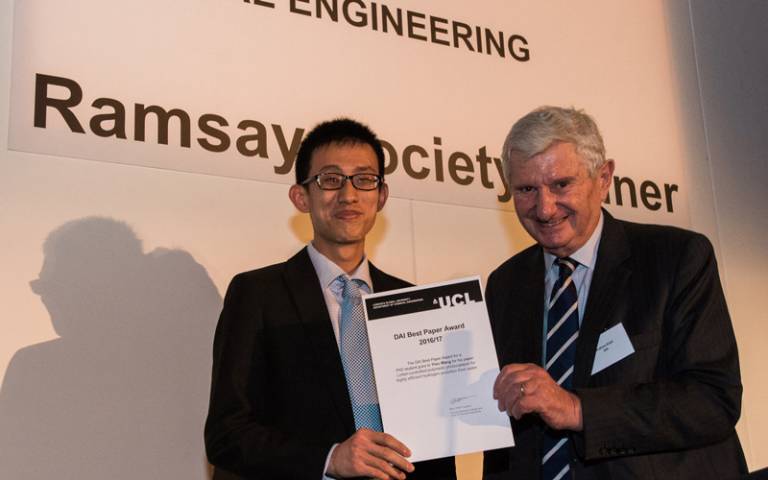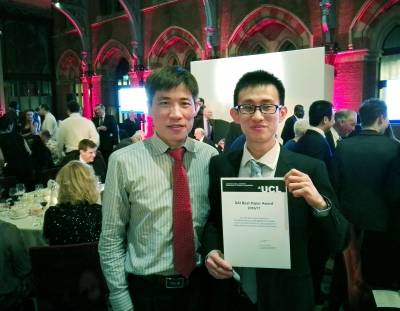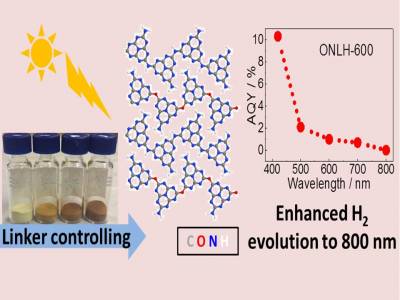Yiou Wang Awarded the 2017 DAI BEST PAPER
7 March 2018
 ucl.ac.uk/chemeng/people/phd-students/yiou-wang" target="_blank">Yiou Wang, as the first author of the published paper entitled "Linker-controlled polymeric photocatalyst for highly efficient hydrogen evolution from water", was awarded the DAI BEST PAPER PRIZE which is for the best paper published in 2017, authored or co-authored by a UCL Chemical Engineering student.
ucl.ac.uk/chemeng/people/phd-students/yiou-wang" target="_blank">Yiou Wang, as the first author of the published paper entitled "Linker-controlled polymeric photocatalyst for highly efficient hydrogen evolution from water", was awarded the DAI BEST PAPER PRIZE which is for the best paper published in 2017, authored or co-authored by a UCL Chemical Engineering student.
Congratulations Yiou!
Solar water splitting is a promising nature-inspired approach to mitigate nowadays' energy and environmental issues. But the activity is still unsatisfactory due to wide band gaps and rapid charge recombination of photocatalysts. By selectively controlling the linker species in earth-abundant polymeric photocatalysts, the band gap of semiconductor has been narrowed to response to the UV-vis-NIR photons and charge separation has been dramatically enhanced, resulting in 25 times higher activity than the previous benchmark g-C3N4 (λ> 420 nm). Therefore, Yiou's paper (published on EES, IF=29.5) is remarkable and highly agrees with the DAI award's aim of recognizing the best scientific publication of PhD.

Abstract
Polymeric photocatalysts have been identified as promising materials for H2 production from water due to their comparative low cost and facile modification of the electronic structure. However, the majority only respond to a limited wavelength region (λ < 460 nm) and exhibit fast charge recombination. Our density-functional theory (DFT) calculations have identified an oxygen-doped polymeric carbon nitride structure with heptazine chains linked both by oxygen atoms and by nitrogen species, which results in a reduced band gap and efficient charge separation. A novel synthetic method has then been developed to control both surface hydrophilicity and more importantly, the linker species in a polymer, which highly influences the band gap and charge separation. As such, the synthesized polymer can be excited from UV via visible to even near-IR (λ = 800 nm) wavelengths, resulting in a 25 times higher H2 evolution rate (HER) than the previous benchmark polymeric g-C3N4 (λ > 420 nm), with an apparent quantum yield (AQY) of 10.3% at 420 nm and 2.1% at 500 nm, measured under ambient conditions, which is closer to the real environment (instead of vacuum conditions). The strategy used here thus paves a new avenue to dramatically tune both the light absorption and charge separation to increase the activity of polymeric photocatalysts.

 Close
Close

